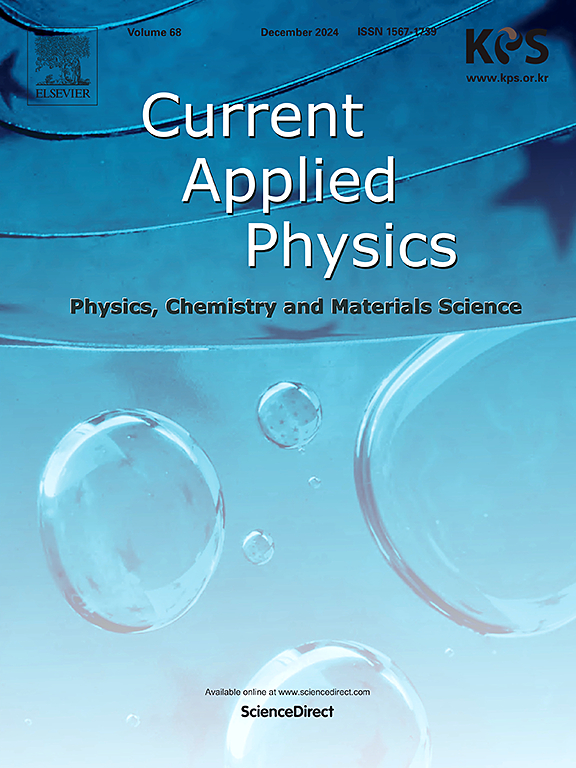Enhanced charge balance in QLEDs using oxygen vacancy induced defect states in Nb2O5 interfacial layer
IF 3.1
4区 物理与天体物理
Q3 MATERIALS SCIENCE, MULTIDISCIPLINARY
引用次数: 0
Abstract
To enhance the performance of quantum-dot light emitting diodes (QLEDs), we used an Nb2O5 interfacial layer as a buffer layer. The Nb2O5 layer is used as an n-type semiconductor with electron transport properties. In this study, a significant number of defect states resulting from the oxygen vacancies in the Nb2O5 layer were used to create gap states, bringing the valence band maximum (VBM) energy level closer to the Fermi level. This resulted in a lower injection barrier, facilitating efficient hole transport. However, charge imbalance occurs due to electron accumulation in the emission layer, resulting from the mobility difference between electrons and holes. This issue can be resolved by using the Nb2O5 interfacial layer, leading to a current efficiency of 10.1 cd/A, the luminance of 106,194 cd/m2, and the EQE of 2.4 %. This represents almost a two-fold performance improvement compared to QLEDs device without the Nb2O5 interfacial layer. These results demonstrate that the ITO/Nb2O5/V2O5/TFB/QDs/ZnO/Al structure of the device can enhance the performance of QLEDs by facilitating efficient hole transport through oxygen vacancies.

利用氧空位诱导Nb2O5界面层缺陷态增强qled电荷平衡
为了提高量子点发光二极管(qled)的性能,我们采用Nb2O5界面层作为缓冲层。Nb2O5层被用作具有电子输运性质的n型半导体。在本研究中,由于Nb2O5层中氧空位导致的大量缺陷态被用于产生隙态,使价带最大能级(VBM)更接近费米能级。这降低了注入屏障,促进了高效的井眼运移。然而,由于电子和空穴之间的迁移率差异,导致电子在发射层中积聚,导致电荷不平衡。采用Nb2O5界面层可以解决这一问题,使器件的电流效率达到10.1 cd/ a,亮度达到106,194 cd/m2, EQE达到2.4%。与没有Nb2O5接口层的qled器件相比,这几乎是性能提升的两倍。这些结果表明,ITO/Nb2O5/V2O5/TFB/QDs/ZnO/Al结构可以通过促进通过氧空位的高效空穴传输来提高qled的性能。
本文章由计算机程序翻译,如有差异,请以英文原文为准。
求助全文
约1分钟内获得全文
求助全文
来源期刊

Current Applied Physics
物理-材料科学:综合
CiteScore
4.80
自引率
0.00%
发文量
213
审稿时长
33 days
期刊介绍:
Current Applied Physics (Curr. Appl. Phys.) is a monthly published international journal covering all the fields of applied science investigating the physics of the advanced materials for future applications.
Other areas covered: Experimental and theoretical aspects of advanced materials and devices dealing with synthesis or structural chemistry, physical and electronic properties, photonics, engineering applications, and uniquely pertinent measurement or analytical techniques.
Current Applied Physics, published since 2001, covers physics, chemistry and materials science, including bio-materials, with their engineering aspects. It is a truly interdisciplinary journal opening a forum for scientists of all related fields, a unique point of the journal discriminating it from other worldwide and/or Pacific Rim applied physics journals.
Regular research papers, letters and review articles with contents meeting the scope of the journal will be considered for publication after peer review.
The Journal is owned by the Korean Physical Society.
 求助内容:
求助内容: 应助结果提醒方式:
应助结果提醒方式:


